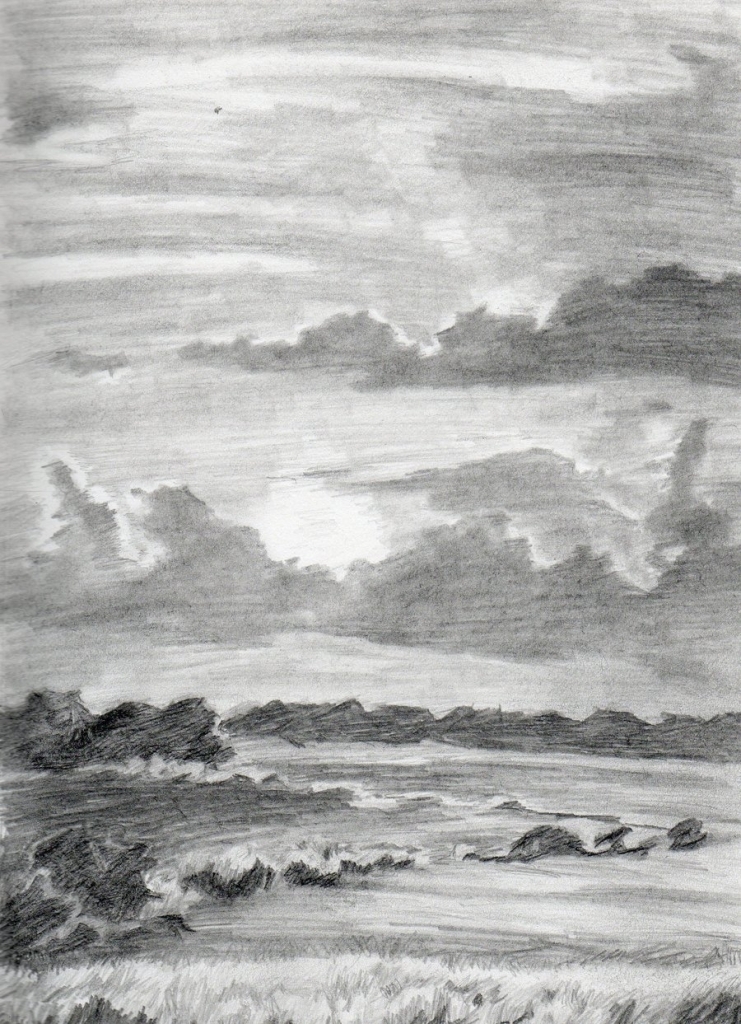
I often draw on Stonehenge colored papers pad, Strathmore Bristol Smooth, and some other printmaking papers that have similar properties to Stonehenge. Sketch papers are too thin to layer the pigments, and are not archival to work on.

Pick the drawing paper that’s smooth to the touch, and avoid using the sketch paper as your primary drawing paper. Never draw on a textured paper with colored pencils! Textured surface “eats up” the colored pencils, and the colored pencil blending becomes a real nightmare.

Paper’s smoothness and color colored papers Shading over the graphite makes the color look dirty and flattens out the space. When you work in colored pencil, the surface must be clean of any residue or excessive graphite lines. I draw the face on a sketch paper and then transfer the outlines onto my good drawing paper. Always keep a one-eye distance between the eyes. It’s a very common mistake to draw the eyelids of the same size and shape converging in a corner.

Both eyelids don’t make a corner, like you see in the Egyptian eyes. The upper eyelid has a different shape from the lower eyelid. For that I draw equal circles first and then partially cover the circles by the eyelids. I make a straight line to line up the eyes on it, and then strive to make the eyes of the same size and shape, so they appear identical. This way both eyes are placed correctly on the face. I place a line at a diagonal first and then draw the eyes on that line, keeping a one-eye distance between the eyes. Get the scale and proportions right, and then break the face down to unique features. It’s important to start drawing from the basic structure of the face, rather than relying on a contour line. If your aim is to draw a portrait realistically, you’ve got to become observant and catch all the elements you see particular to that person. Understand the basic proportions first, and then apply them to your drawing of a particular person. Anatomical accuracy This is Leonardo’s study of the anatomy of the head. Stand up or look down, don’t just take pictures at an eye level. Zoom in to the face and crop it on purpose with your camera, giving you a fresh point of view. Find a special angle that sharpens the character, makes him or her look attractive. There is a reason why you want to draw people. Besides having good lighting conditions, consider the person’s character or personality. Here a single light source with red filter covering the lamp illuminates my model. Set the person up against a plain background, put the light on one side of the face and shoot. All you need is a single light source, like a table lamp or a floor lamp to create an abstract pattern of strong light and shade on a person. I also like the Rembrandt lighting that’s easy to set up in a room. The shadows are much softer and don’t cut into the face as much as in the afternoon light.
Sunset color pencil drawing skin#
Its pinks, golden yellows and purples make the skin look fresh. I love the glowing light one hour before the sunset. Shadows give natural presence to the art. Pay attention to the shadows because when you put them into your art, your subjects would look more realistic and three-dimensional. Spend a considerable amount of time arranging and posing people.

Don’t use flash to observe natural shadows, and take pictures at different times of the day to understand what lighting conditions work best for you, making the subject look exciting. Study other artists and photographs to see how the light shapes the form. Since most colored pencil artwork is done from photographs, you must become a good photographer to catch the right light with your camera. The quality of the light is paramount to your success.
Sunset color pencil drawing how to#
Video courses Drawing portraits in colored pencils: tips and techniquesĪre you interested to know how to draw people? If drawing portraits with colored pencils is your passion, consider following these principles to improve your art:


 0 kommentar(er)
0 kommentar(er)
